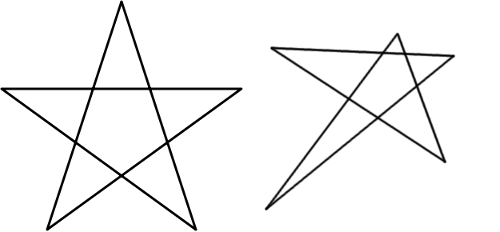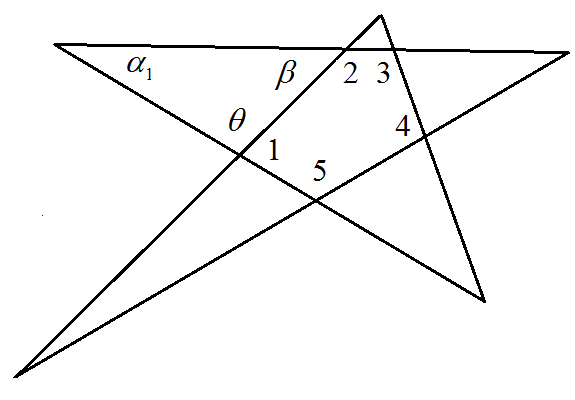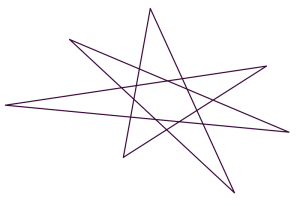Futility Closet recently posted a nice puzzle about the sum of the angles in the “points” of a star polygon.

It’s easy to show that the five acute angles in the points of a regular star, like the one at left, total 180°.
Can you show that the sum of these angles in an irregular star, like the one at right, is also 180°? (link)
A clever proof is shown, but what I would consider the standard proof is clever, simple, and beautifully generalizable.
Consider the star pentagon below.
 By the exterior angle theorem, we have
By the exterior angle theorem, we have


So

where the last equality follows from the triangle angle sum formula.
Do this for each of the five “points” and sum the equations

Now, the sum of the interior angles of any pentagon, regular or not, is  , so this becomes
, so this becomes

And so, a little arithmetic gives us

For stars of this type, where the points are formed by intersecting two sides of an n-gon that are separated by exactly one side, this method generalizes beautifully. The above equation becomes

which simplifies to

In particular, we see that when n = 5, we have that  . And one of the best things about having a formula like this is asking questions like “What happens when n = 4?” and “What happens when n = 3?”!
. And one of the best things about having a formula like this is asking questions like “What happens when n = 4?” and “What happens when n = 3?”!
Now, there are other types of star polygons. For example, if you start with an octagon, extend the sides, and consider the intersections of two sides that themselves are separated by exactly two sides of the octagon, you get something that looks like this.

While the formula above doesn’t apply to this star, a similar technique does. The big difference is that, instead of the star’s points being attached an an n-gon (a pentagon, in the first example), this star’s points are attached to another star polygon! There are lots of fun directions to go with this exploration.





